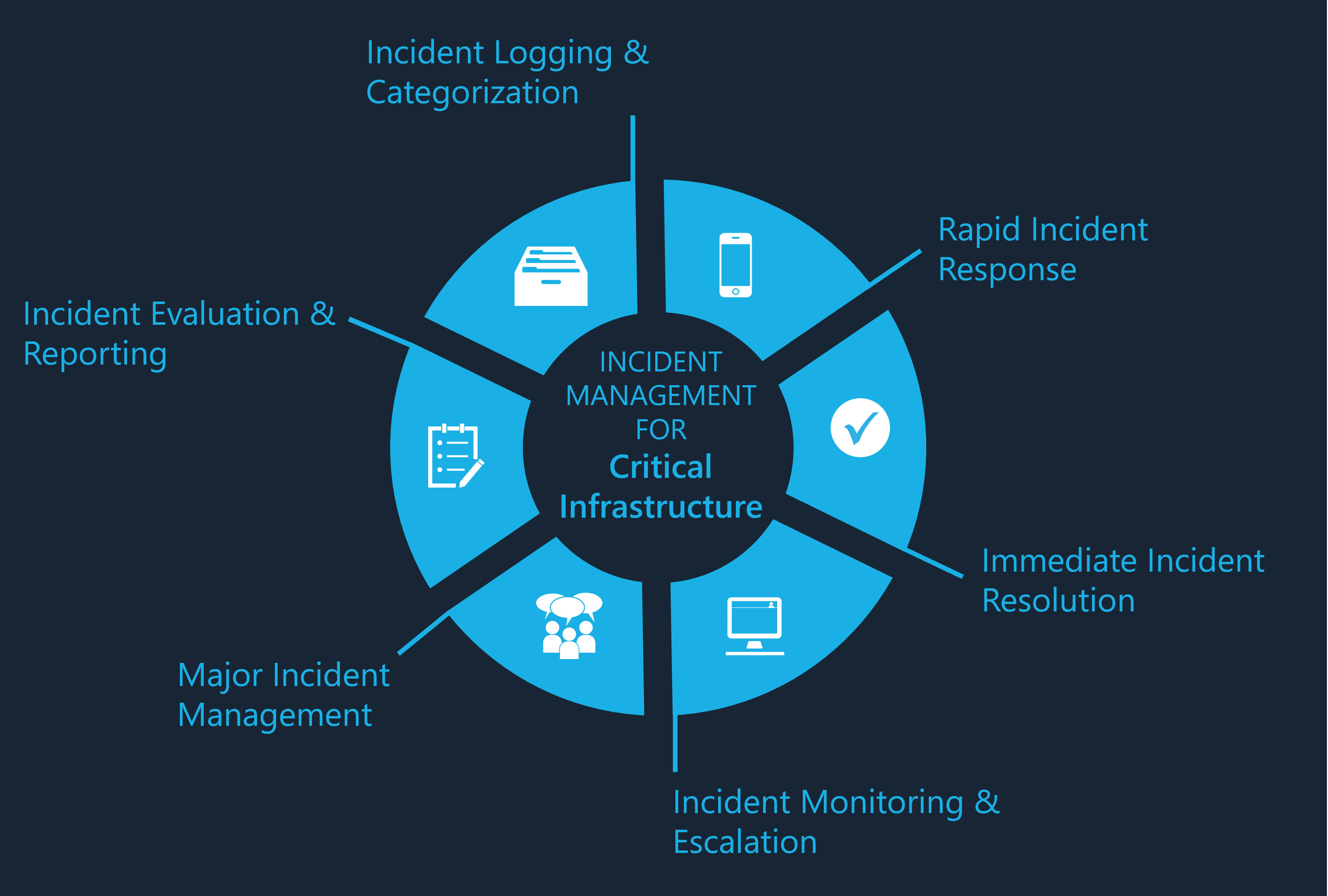Modern Incident Management
Accelerate response, boost accountability, and streamline incident workflows with real-time mobile alerts, transparent ownership,
185+ integrations, and more.
- RReimagines your incident response
- RTrusted by 1,000+ global customers
- REnterprise-grade security and privacy
- RReady to run in just 5 minutes
Next-Level Incident Management
Be ready when it counts
Incident management is all about managing the full lifecycle of unexpected disruptions—from detection to resolution. The faster your team can respond, the lower the impact.
SIGNL4 enhances every step of that lifecycle by delivering real-time alerts, mobilizing on-call teams, and accelerating resolution. Whether it’s IT or OT, SIGNL4 helps you handle critical incidents with speed and confidence.
“This system works as advertised and the perpetual notifications until acknowledgment really helps when things go bad in the middle of the night. Also love the fact you can setup a chain so that if the 1st responders do not reply in a set period of time, it will start alerting the next person on your list.”
How SIGNL4 Works
SIGNL4 is a cloud-based incident management and alerting platform that enhances every stage of the incident lifecycle. It streamlines workflows and empowers rapid, reliable response — anywhere, anytime.

Cutting Through the Noise
Event Logging & Categorization
SIGNL4 connects with your IT and OT monitoring tools to capture and categorize incoming events. Its built-in event processing engine filters out alert noise, de-duplicates repetitive signals, and delays non-critical alerts to allow for auto-recovery — so only actionable incidents trigger a response. The result? Smarter prioritization and faster routing to the right on-call team every time.
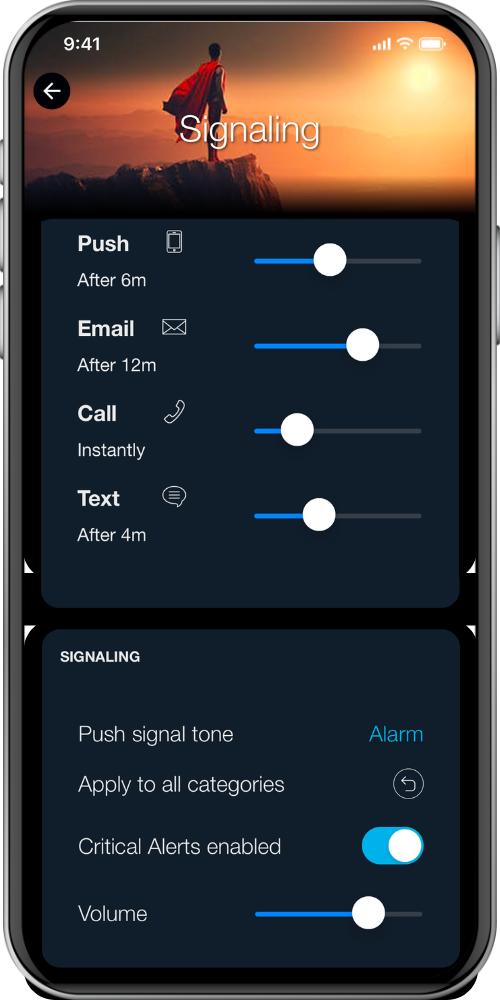
When Minutes Matter
Rapid Incident Response
In many organizations, major incidents are first routed through Level 1 support — delaying resolution. SIGNL4 enables direct, targeted notification to the right experts, bypassing unnecessary steps.
By intelligently categorizing alerts and routing them to on-call staff, SIGNL4 reduces false alarms and can eliminate the need for manual triage — often streamlining or replacing parts of Level 1 support entirely.
Incident Management and Automation
Major incidents disrupt critical business operations — and demand urgent, coordinated response.
SIGNL4 equips your team to respond faster and more effectively with features tailored for high-impact incidents:
- RTargeted mobile alerts for instant reach
- REscalation and tracking to ensure accountability
- RBuilt-in duty scheduling and team sync
- RCross-team collaboration tools
- RAnywhere remediation from mobile devices
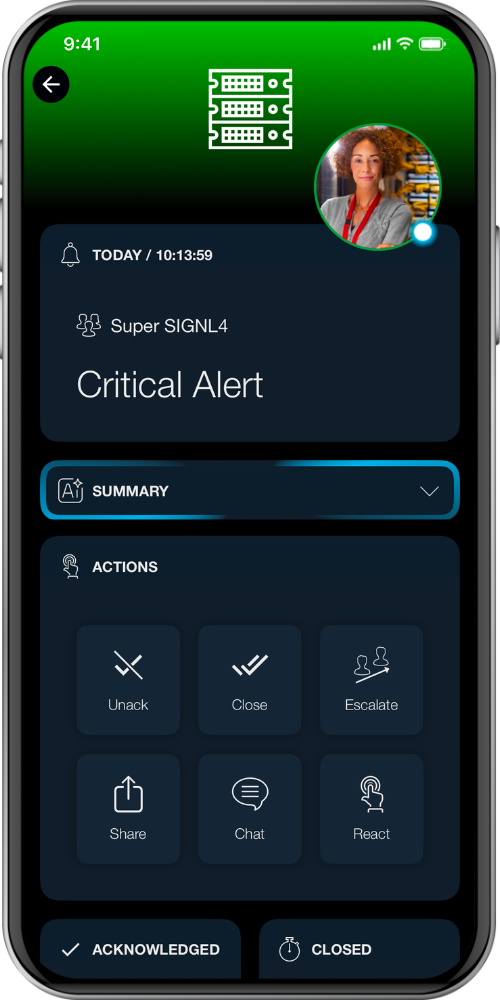
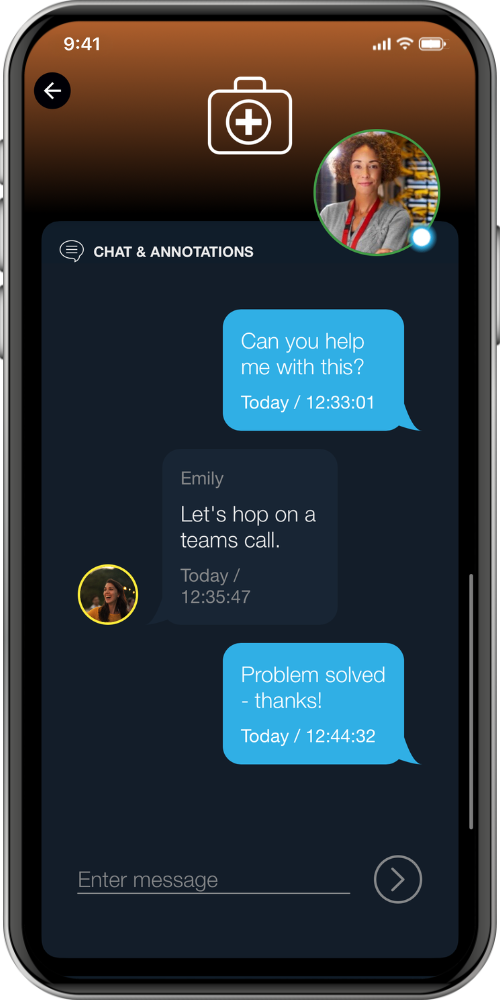
Transparency Makes a Difference
Incident Monitoring and Escalation
SIGNL4 brings real-time visibility to your incident response. Every alert is tracked and acknowledged, with clear records of who is handling what — accessible anytime via the mobile app or web dashboard.
Incident ownership, annotations, and actions are automatically synced back into your IT monitoring or service desk tools, creating a complete audit trail.
SIGNL4’s intelligent escalation engine goes beyond traditional SLA-based models. Escalations trigger earlier and more precisely — driving faster resolution and reducing the risk of unresolved alerts.
Digital Journaling
Incident Resolution and Reporting
SIGNL4 offers built-in tools for reviewing and analyzing past incidents. A detailed timeline tracks notifications, acknowledgments, actions, and resolution steps in one place.
Automated post-duty reports summarize each incident, its owner, and how it was handled — giving you clear insight for evaluation and continuous improvement.
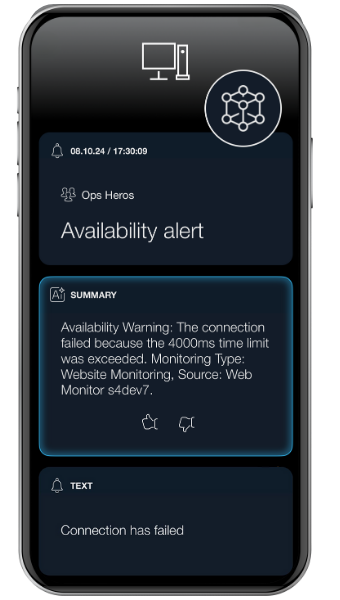
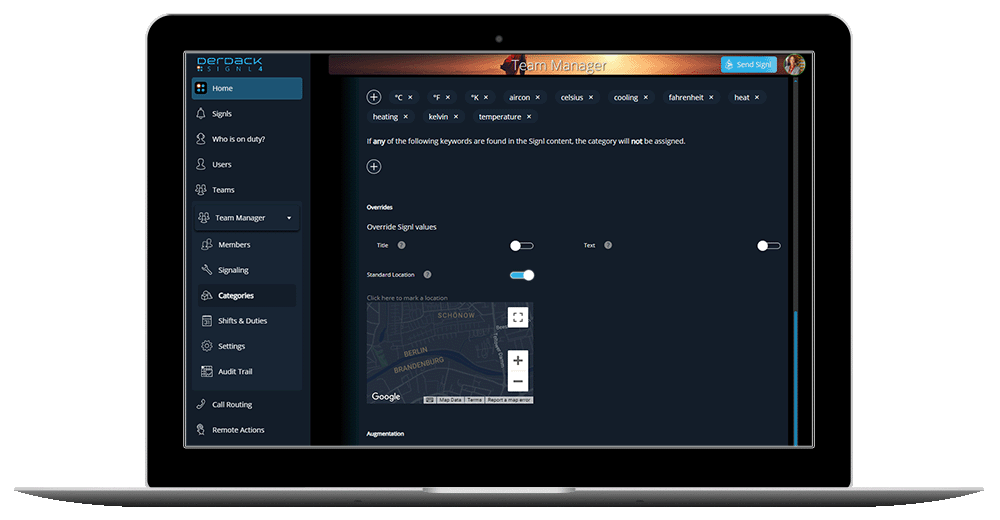
Proactive User Notifications
SIGNL4 includes built-in tools to notify affected users about service disruptions — and keep them updated as incidents progress.
This proactive communication helps users prepare for downtime, reduces uncertainty, and cuts down on unnecessary helpdesk calls.
Problem Management
While SIGNL4 accelerates incident response, some issues require deeper investigation. That’s where problem management begins.
SIGNL4 integrates seamlessly with ITSM tools like ServiceNow, Kaseya, Halo ITSM and others — enabling automated or semi-automated creation of problem records from unresolved incidents.
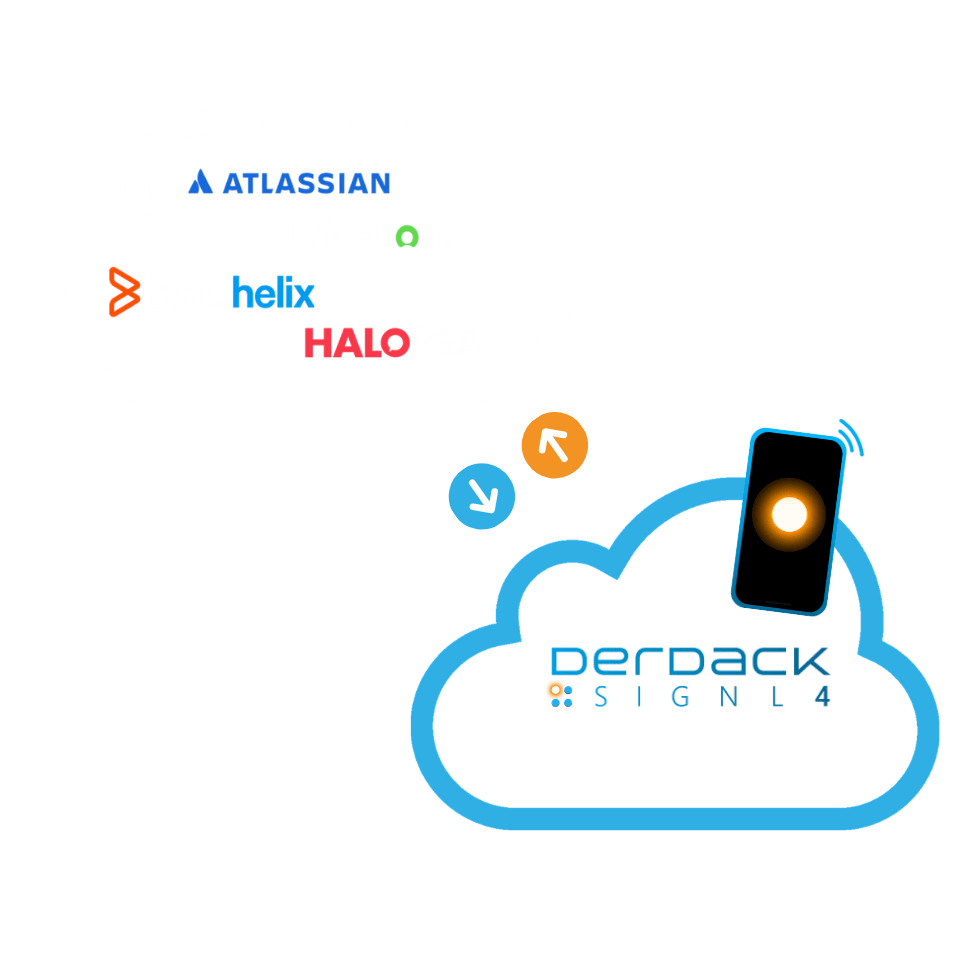
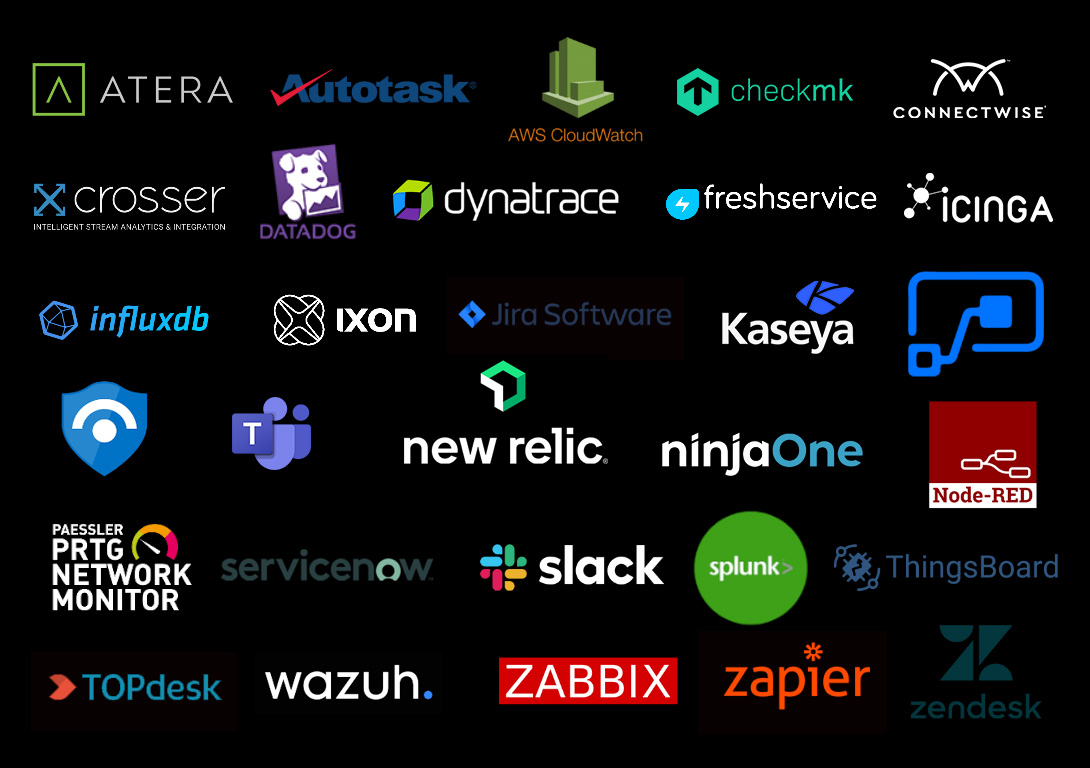
Seamless System Integration
Incident Management with Powerful APIs
SIGNL4 integrates easily with ITOM, ITSM, SCADA, and other systems via email, webhooks, REST, and 2-way connectors — consolidating events and alerts from multiple sources.
With over 185 tested and verified integrations, plus a robust REST API for syncing on-call schedules, SIGNL4 fits right into your existing tech stack. Sample scripts are available on GitHub to help you get started fast.
Summary
The Modern Standard for Incident Management
SIGNL4 is a powerful incident management platform that transforms how DevOps and service desk teams handle critical events. From detection to resolution, it streamlines the entire incident management process with reliable mobile alerting, automated escalations, and clear incident communication.
By accelerating response and reducing resolution time, SIGNL4 improves uptime and enhances customer satisfaction. Teams gain real-time visibility, faster coordination, and detailed incident reports — all from a single platform, accessible anywhere.
Whether you’re managing day-to-day operations or high-stakes outages, SIGNL4 ensures your team is always ready.
Next Steps
Learn more about SIGNL4 and start your free 30-days trial of Incident Management
Incident Management Related Blogposts
AT&T Discontinues Email-to-Text Service: Why SIGNL4 is the Best Alternative
What Happened? In a move that has caught many businesses and IT teams off guard, AT&T has officially announced to discontinue its email-to-text gateway service. It is going to happen on June 17, 2025 (read more). This change means that sending text messages to...
The AI Revolution in Incident Management: Insights from the Frontlines – by Doreen Jacobi
Cofounder Doreen Jacobi spoke with several of our customers about the revolution AI is bringing to incident management. Artificial Intelligence has seamlessly integrated into our daily lives, often in ways we barely notice. But what does that actually mean for...
What is the best IT alerting software for 2025?
In the fast-paced world of IT, having a reliable IT alerting software is crucial to ensure swift issue resolution and minimal downtime. The right IT alerting software not only notifies you of critical incidents but also ensures that your team is equipped with tools to...
How effective Incident Notifications and Ownership Transparency change the Incident Management Game
Meet restless Ralf
Ralf is in charge. In charge of various applications that are used by hundred thousands of customers. His company hosts IT services and applications for major insurance companies. Ralf loves his job and his tasks. But it is a lot of responsibility, too. And Ralf used to not sleep very well. It has only been a few weeks ago since they had to deal with that major security incident at night – and it was even worse than the one last year. One of the applications he’s in charge of simply stopped working at 2 am.
But Ralf didn’t find out until much later –
When your boss and your customers know before you do
When he woke up at 6 am and turned his cell phone on (which he switched off to protect his kid’s sleep) he was immediately bombarded with menacing mailbox notifications. Oh gosh, he knew he was in trouble when he checked those voice mails. He didn’t know what was worse – his boss or his company’s client. Customers of the insurance company in overseas had been unable to use some of their services including the mobile app since their early morning.

He immediately called his boss and the client, telling them he’s on the job, tracking what happened and figuring out how fast they could fix it. Uh, what a job to calm down the client. He then started calling his team – one team member after the other, attempting to nail the problem down. First of all Peter who he remembered being on call this week. But Peter didn’t answer the phone. What was wrong with that man? Ralf started boiling. He called another team member and was told that Peter had been trying to find a stand-in last night because his son had broken his leg at a football game. But who had jumped in as a stand-in?
Meanwhile it was 7 am
Finally, he reached Mike. Mike had jumped in for Peter. But Mike claimed to have not received the alert notification that had been sent by email and text. Ralf didn’t want to finger point, but in all fairness, Mike had never been the most reliable person. Unfortunately, he couldn’t prove anything as he didn’t have any track record of the alert message and its delivery. Their monitoring tool didn’t produce any notification records. On top of it all, Mike claimed that although he had seen the incident early that morning – he didn’t feel responsible for it, as he was certain that only the network team could solve the issue. After all, it wasn’t anything that had to do with their application not running. Right…
Ralf then tried to setup a call with the network team – what a morning – he couldn’t get hold of anyone there. And he didn’t have access to their on-call calendar. At 7.30 am, Ralf gave in, fired up is notebook and started to dig into the IT stack himself. At 9.15 am he seemed to have found a potential cause – so, apparently, if you want something done, do it yourself. It still took him, his team and the networks guys until 10.45 am to fix the issue and to have everything up and running again. Unfortunately, this hadn’t been the first disruption of crucial services. The reputation of his company as well as his own was at stake.
Ralf’s Team needed a Tool
He knew what he wanted. Gaps and bottlenecks were easily identified. He needed to respond to future priority incidents much better. So, his and his team’s top priorities were:
- 100% reliable alert notifications – including actionable incident details – that were traceable, so there is clear accountability
- A ‘who’s on call’ that was accessible, ideally from a mobile phone, to check what’s going on
- Some good and transparent on-call scheduling, to comfortably ensure timely responsibilities
- Automated alert routing to the person on call, to make sure incidents are not overlooked
Above all, he needed to stay in the loop. So, he could provide his boss and his client with the answers they were looking for.
What Ralf needed for himself and for his Role was even more
- To be looped-in when the “sh…hits the fan”. And yes, please persistently, on the red line…
- See who’s taking care of what, so he doesn’t need to run after the information he so desperately needs
- Ideally, some sort of early morning, post-night-shift report with incident ownership information
- And finally, some way of easily setting up a conference bridge. With his team or even cross-team.
Ralf needed a tool that would ensure a reliable means of “letting the right person know” and deliver the desperately needed transparency about incident accountability and incident resolution progress.
Ralf looked at SIGNL4 and knew he’d found what he was looking for. An unmatched, effective incident management system. And even more.


